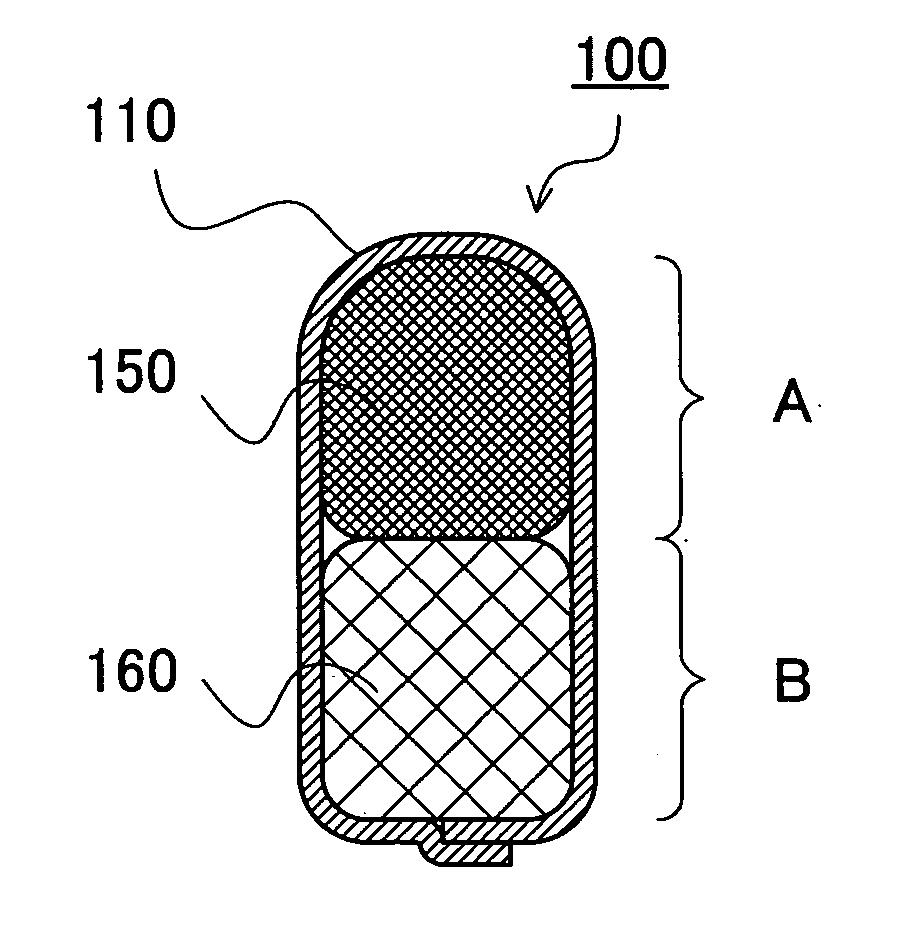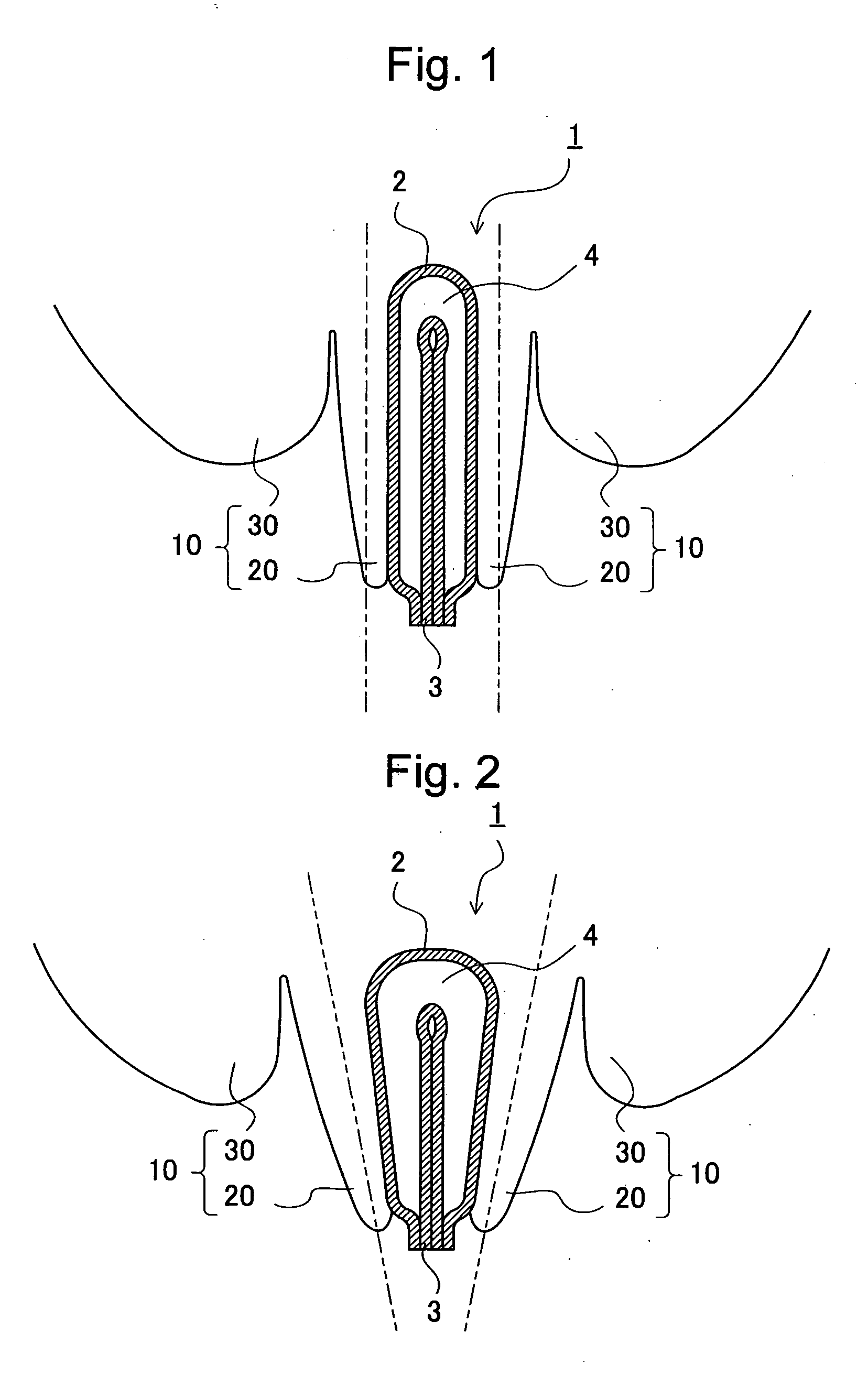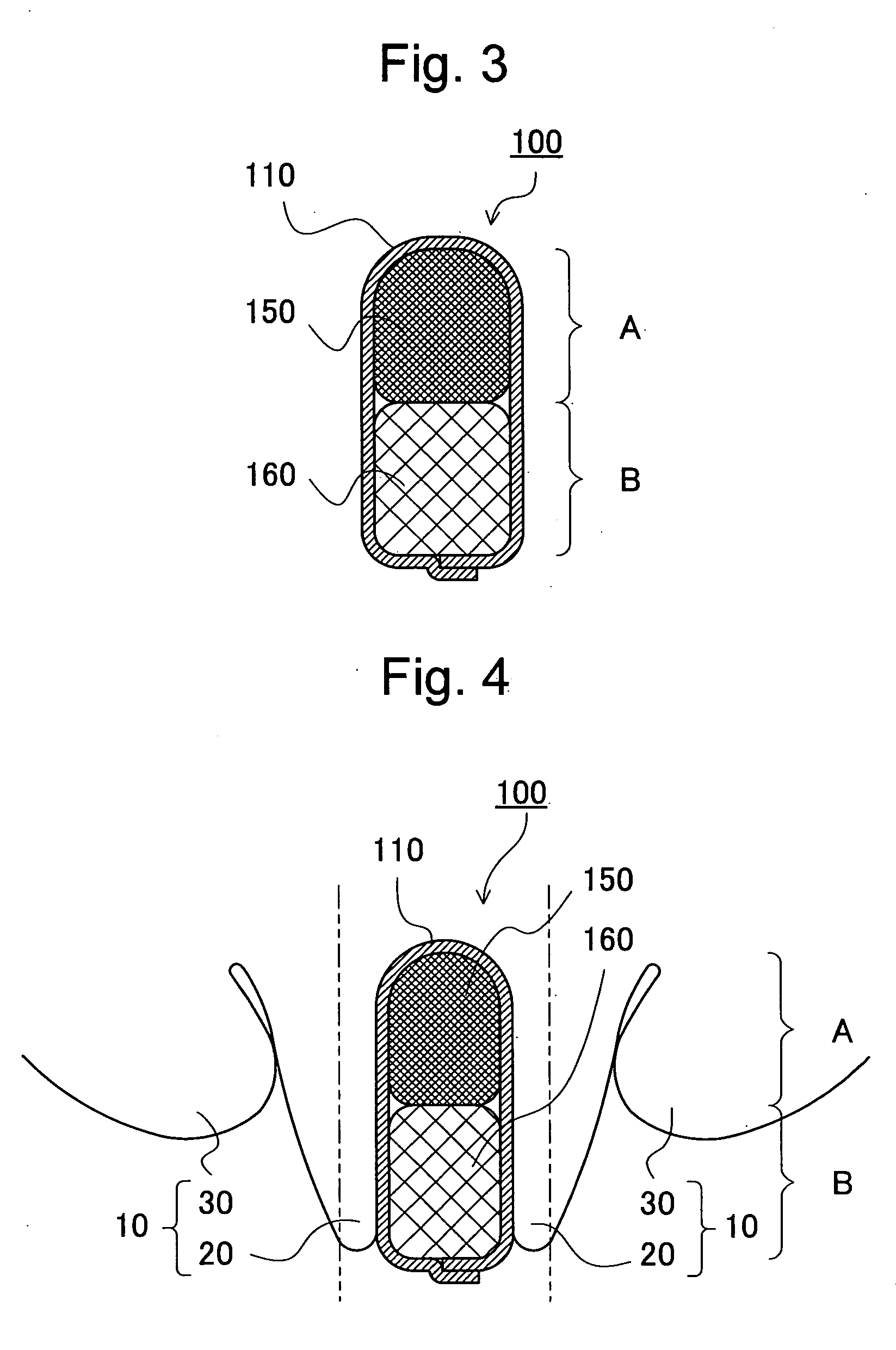Interlabial pad
a technology for interlabial pads and pads, applied in the field of interlabial pads, can solve the problems of difficult opening of labia minora pudenda near the vestibule floor, and achieve the effect of reducing the likelihood of falling off of the pad
- Summary
- Abstract
- Description
- Claims
- Application Information
AI Technical Summary
Benefits of technology
Problems solved by technology
Method used
Image
Examples
first embodiment
[0065] [Overall Configuration of an Interlabial Pad]
[0066]FIG. 3 is a cross-sectional view of an interlabial pad 100 according to the present embodiment, taken along a plane perpendicular to the central longitudinal axis of the pad. As shown in FIG. 3, the interlabial pad 100 according to the invention comprises an absorbent body covered with a topsheet 110, the first portion “A” and the second portion “B”. Further, a part of an absorbent body 150 of high fiber density is disposed in the first portion “A” and another part of an absorbent body 160 of low fiber density is disposed in the second portion “B”. The topsheet 110 is positioned on wearer's body side during use of the pad (hereinafter, referred to simply as “during use”) and pervious to body exudates of a wearer.
[0067]FIG. 4 is a diagram showing the used state of the interlabial pad 100 according to the invention. Although during use, larger interlabial pressure is applied to the first portion “A”, compression repulsive forc...
second embodiment
[0094] An interlabial pad 200 according to this embodiment is characterized in that an absorbent body 250 in the first portion “A” is thicker than the absorbent body 250 in the second portion “B”. The remaining configuration of the embodiment is similar to that of the first embodiment. FIG. 6 is a cross sectional view of the interlabial pad 200, taken along a plane perpendicular to the central longitudinal axis of the pad. The thickness of the absorbent body 250 in the first portion “A” is preferably 1.2 to 10 times the thickness of the absorbent body 250 in the second portion “B”. In more detail, the thickness of the absorbent body 250 in the first portion “A” is preferably in the range of 2 mm to 20 mm and more preferably in the range of 3 mm to 15 mm. Further, the thickness of the absorbent body 250 in the second portion “B” is preferably in the range of 0.5 mm to 17 mm and more preferably in the range of 1 mm to 12.5 mm. It should be noted that the absorbent body 250 may be form...
third embodiment
[0111] An interlabial pad according to this embodiment is characterized in that fibers oriented to cross over the vicinity of the central longitudinal axis of the interlabial pad are disposed in an absorbent body in the first portion “A”. The remaining configuration of the embodiment is similar to that of the first embodiment. In the interlabial pad according to the embodiment, the fibers are oriented in the direction of action of interlabial pressure and therefore stiffness of the fibers act to cause a compression repulsive force to be larger in the first portion “A”. Accordingly, this more effectively prevents falling-off of the interlabial pad and leakage of bodily exudates. Further, even when the interlabial pad is compressed by interlabial pressure, but when the pressure is released, the fibers return to its original shape and the absorbent body also returns to its original thickness.
[0112] The method for disposing fibers so as to allow the fibers to orient in a direction cros...
PUM
 Login to View More
Login to View More Abstract
Description
Claims
Application Information
 Login to View More
Login to View More - R&D
- Intellectual Property
- Life Sciences
- Materials
- Tech Scout
- Unparalleled Data Quality
- Higher Quality Content
- 60% Fewer Hallucinations
Browse by: Latest US Patents, China's latest patents, Technical Efficacy Thesaurus, Application Domain, Technology Topic, Popular Technical Reports.
© 2025 PatSnap. All rights reserved.Legal|Privacy policy|Modern Slavery Act Transparency Statement|Sitemap|About US| Contact US: help@patsnap.com



